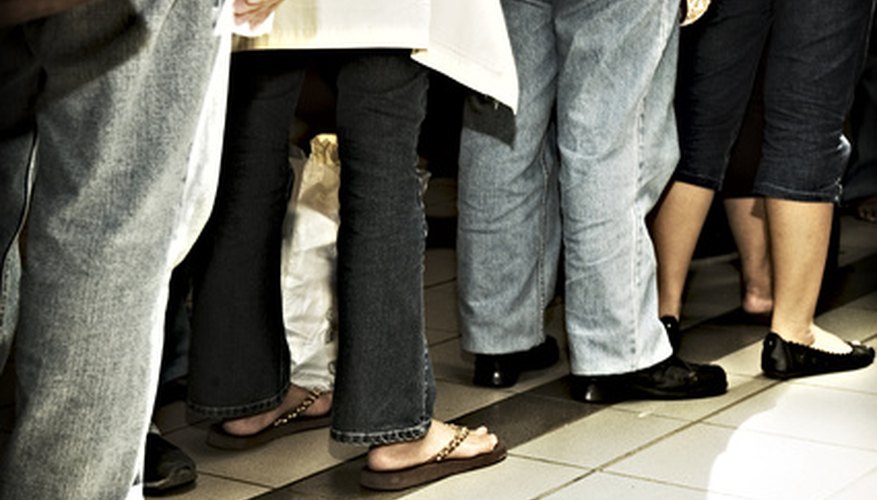Terrorist threats have greatly affected aeroplane boarding security measures. The toiletries you can board a plane with and those within your checked luggage have been strictly regulated since 2006. Allowable toiletries have changed according to research in the past four years, and it looks like they may be affected again by the development of a new liquid scanner.
The Total Ban
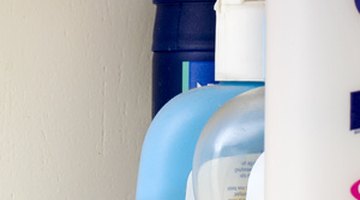
In 2006, British authorities discovered a terrorist plot involving disguised liquid explosives on an aeroplane bound for the United States. The discovery led to a total ban on all liquids in carry-on luggage on aeroplanes in the United States and other countries in early August of that year. This applied to everything from water bottles and make-up to hair gel and toothpaste. Liquid-based articles had to be bagged and placed in checked luggage, which underwent explosives screening and were then stored out of reach.
- In 2006, British authorities discovered a terrorist plot involving disguised liquid explosives on an aeroplane bound for the United States.
- The discovery led to a total ban on all liquids in carry-on luggage on aeroplanes in the United States and other countries in early August of that year.
Changes in the Liquid Ban
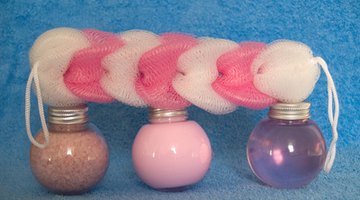
In September 2006, the Transport Security Administration amended the liquid ban to allow travel-sizes of common toiletries in carry-on luggage. The 3-1-1 Rule allows a quart-sized clear, plastic bag containing 100ml containers of liquid-based products for each passenger. These quart bags are placed in a screening bin before aeroplane boarding.
- In September 2006, the Transport Security Administration amended the liquid ban to allow travel-sizes of common toiletries in carry-on luggage.
Former TSA Administrator Kip Hawley told The Washington Post that such small quantities of liquids did not pose a threat to airline security and that the new rule freed airport screeners to spend more time checking for more serious threats. It also saved business travellers the expense of checking their luggage.
What the Ban Entails
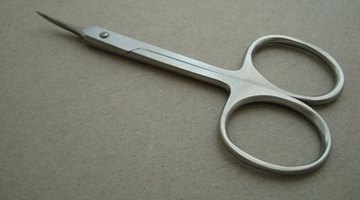
The liquid ban today doesn't allow gel candles or gel shoe inserts in carry-on luggage. Disposable razors and cartridges are allowed. Nasal scissors with blades less than four inches are allowed. All non-flammable liquids and gels are allowed in 96.4gr containers. Larger volumes of such toiletries must be packed in checked luggage. No flammable liquids or gels are allowed in either carry-on luggage or checked luggage, except for 964gr containers of aerosols such as hairspray and perfume.
- The liquid ban today doesn't allow gel candles or gel shoe inserts in carry-on luggage.
- All non-flammable liquids and gels are allowed in 96.4gr containers.
Exceptions to the Ban
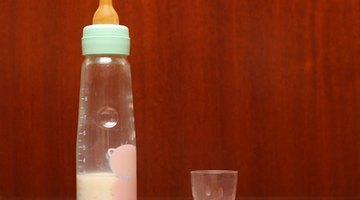
There are a few exceptions to the liquid ban. Baby formula, breast milk and juice or water for babies and small children may be allowed. You can board an aeroplane with non-prescription medications such as eye drops, petroleum jelly, saline solution and other over-the-counter medications in amounts 100ml or less. Liquid nutrition, juice and water are permitted for medical conditions, as are gels in bras for breast reconstruction. Prescription medications are also permitted in aeroplane boarding luggage. All of these items must be declared and inspected by screeners.
- There are a few exceptions to the liquid ban.
- Liquid nutrition, juice and water are permitted for medical conditions, as are gels in bras for breast reconstruction.
After passing through security, you can purchase drinks in the secured area of the airport and board the plane with them.
Results of the Ban
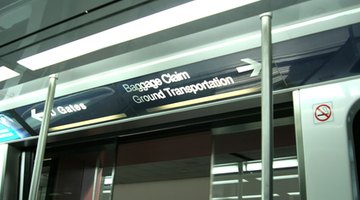
The liquid ban increased waiting time in airport security checkpoints in 2006. Airlines were forced to hire more handlers and screeners, and the rate of lost and mishandled luggage increased by an average of 25 per cent. This was due to the 20 per cent increase in checked luggage.
The New Scanners
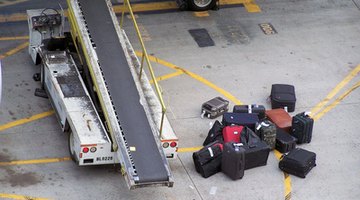
The United States has spent more than £9 million developing refined liquid scanners, reports PhysOrg.com. The new scanners use magnetic resonance to identify liquid components in containers and are about the size of a dorm-room refrigerator. The scanners are so sensitive that they can distinguish red wine from white and one soda from another.
In time, the scanner may negate the 3-1-1 Rule and speed up aeroplane boarding. Any number of toiletries and any size container could be stowed in carry-on luggage: You could board a plane with your favourite beverage or essential shampoo.
- The United States has spent more than £9 million developing refined liquid scanners, reports PhysOrg.com.
- In time, the scanner may negate the 3-1-1 Rule and speed up aeroplane boarding.
Still in the Future
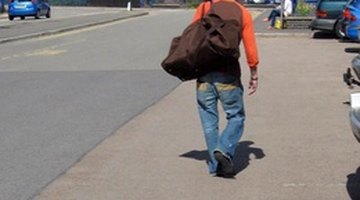
Although secretary general of the International Civil Aviation Organization (ICAO) has announced that the liquid scanner might be implemented within a couple of years and the European Union has plans to lift the liquid ban by 2013, U.S. Homeland Security Secretary Janet Napolitano thinks such announcements are jumping the gun.
- Although secretary general of the International Civil Aviation Organization (ICAO) has announced that the liquid scanner might be implemented within a couple of years and the European Union has plans to lift the liquid ban by 2013, U.S.
- Homeland Security Secretary Janet Napolitano thinks such announcements are jumping the gun.
PhysOrg.com reports that even though refinements over the past two years have made the new liquid scanner 90 per cent smaller and six times faster; the inventor lab is still working on making it even smaller so that it will easily fit beside other screening equipment in airports. Plus, the lab must work out a partnership with a manufacturer.
The ICAO, the U.S. Department of Transportation, the European Union and the International Air Transport Association have agreed to work together and share airline safety information to hasten progress in airline security regulations.
